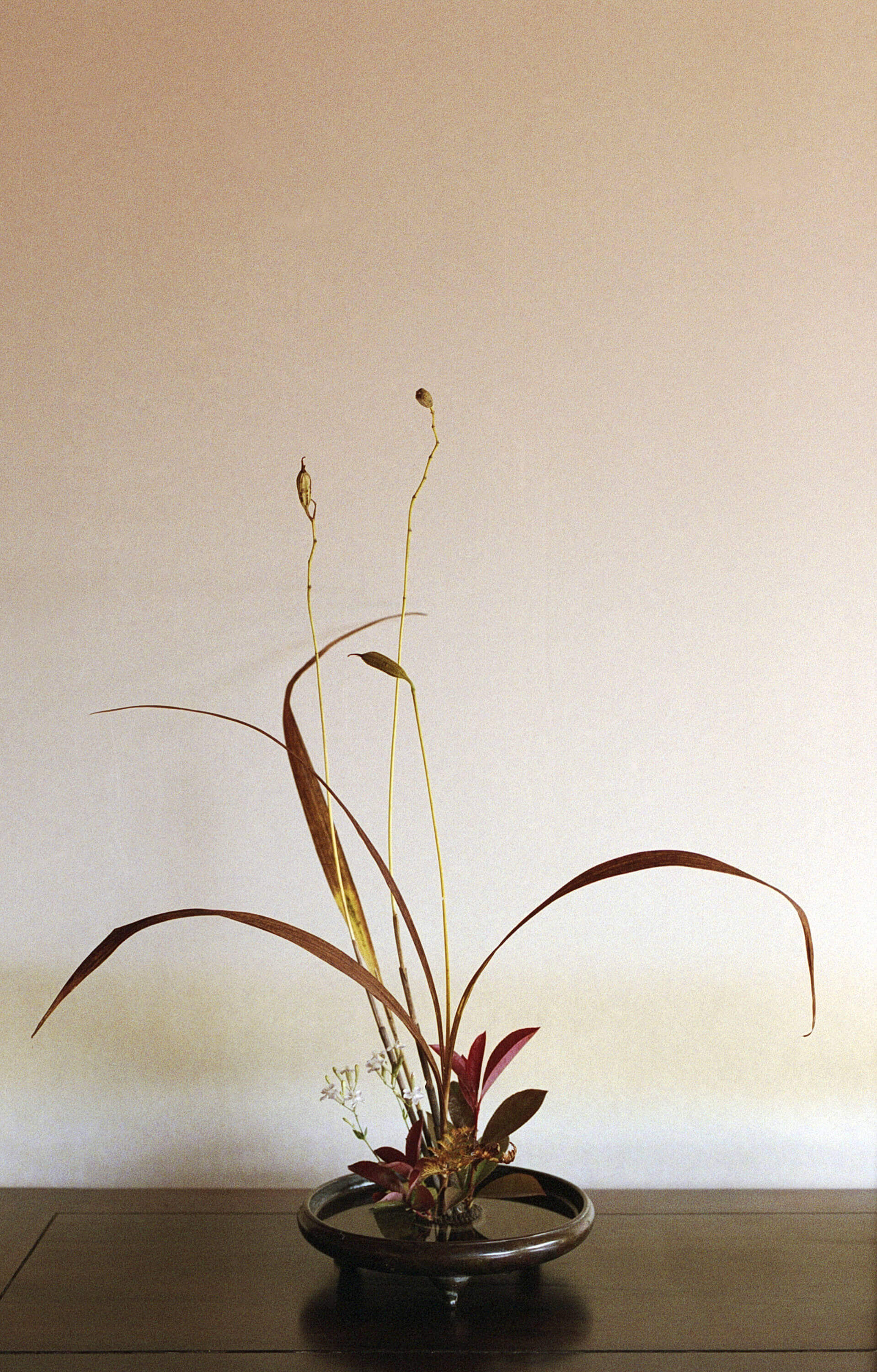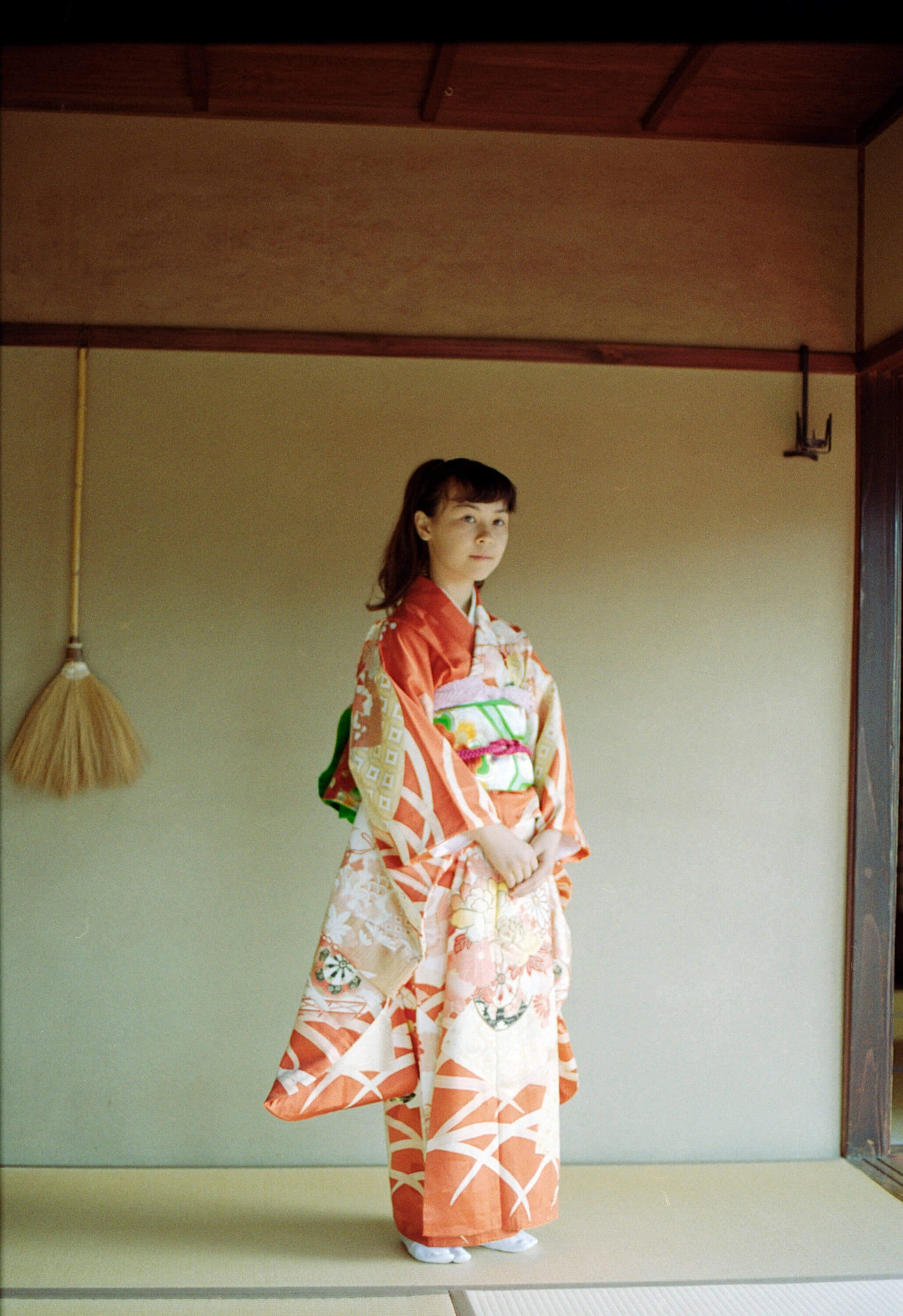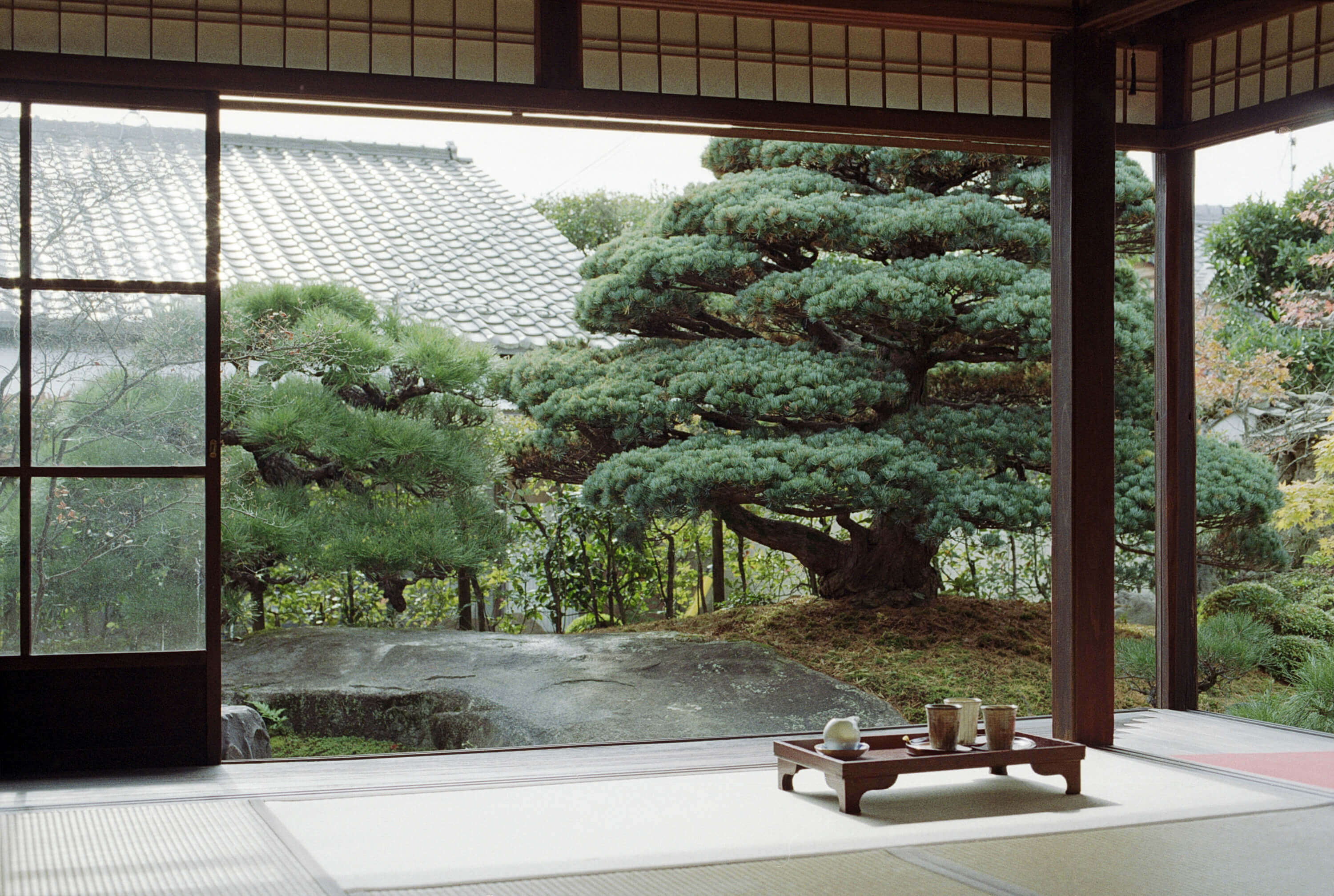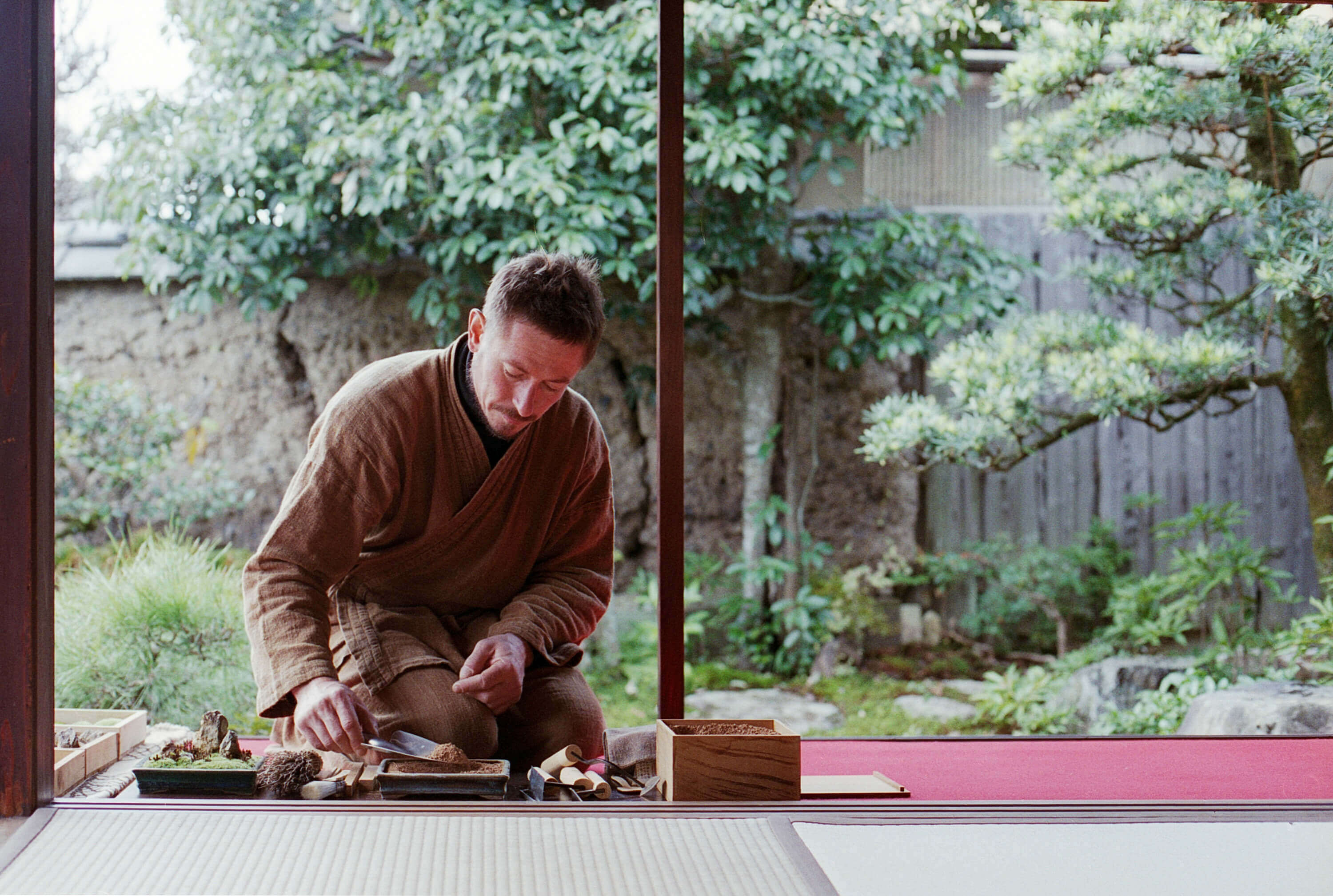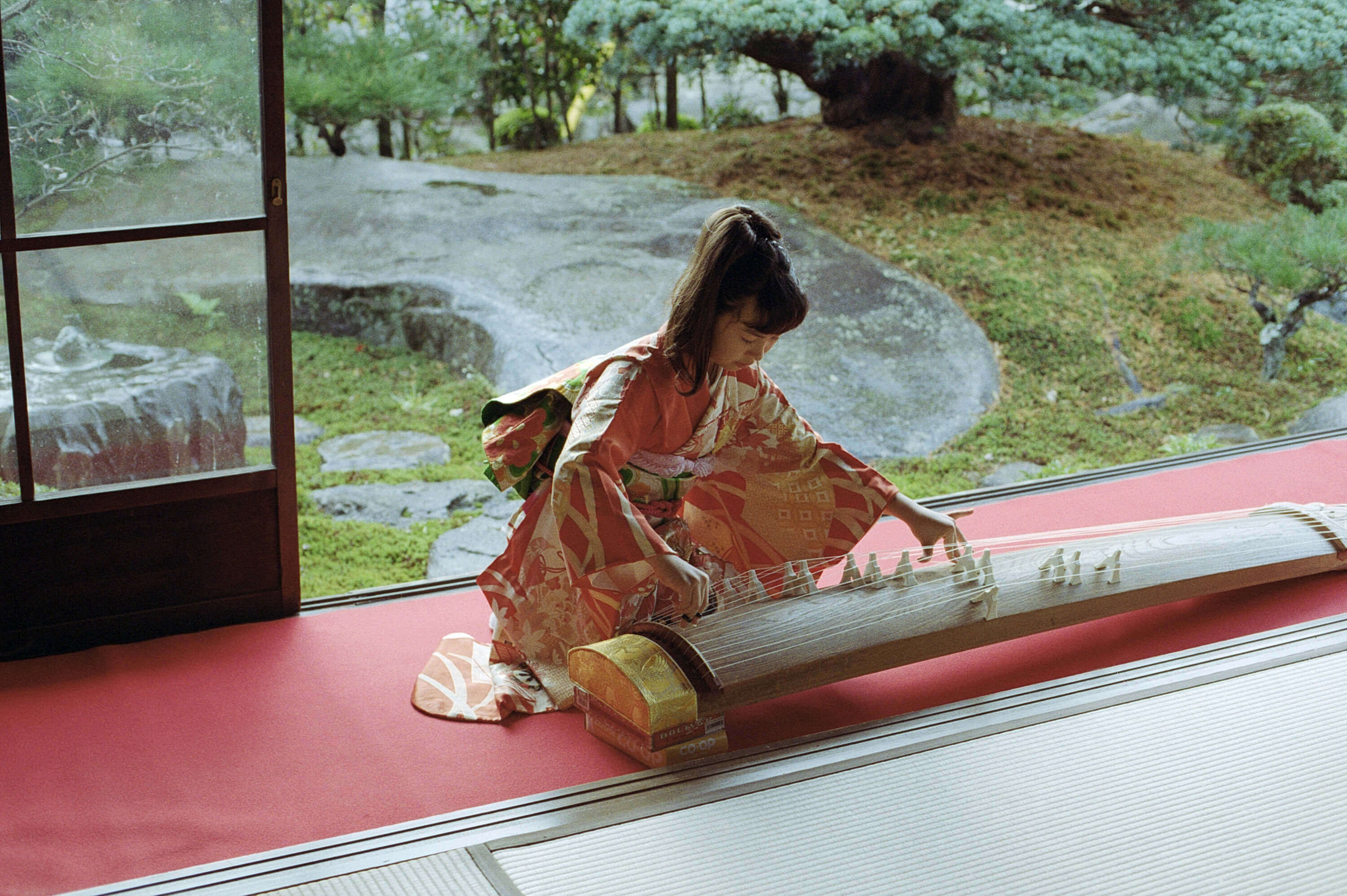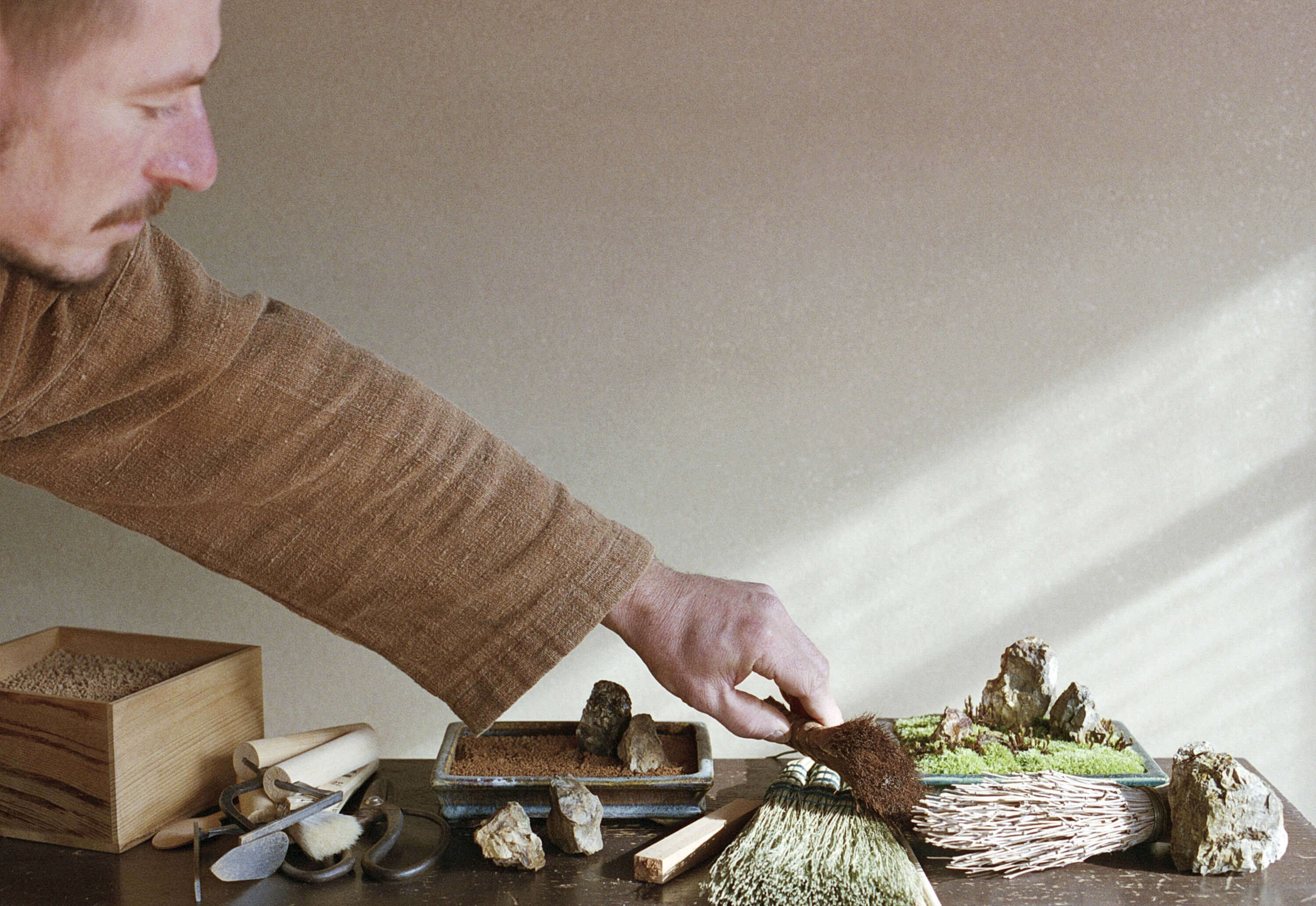The twenty-first typhoon of the season in the Pacific was edging its way northwards towards Okinawa on the day when the country was going to the urns for the general elections. A record number of citizens went out before the arrival of the storm. Lan was so enormous that its cloud cast the whole of Japan into darkness. Gert’s garden was waiting for the storm too. It would rattle the Japanese indigo fabric with the outline of a snowy Mount Fuji and a new moon, hanging on the wall next to the simple rice straw broom. It would shake Gert’s landscapes: small trees, small rocks and small portions of moss in rectangular ceramic trays.
In Japan there exist 1,600 varieties of moss and for humankind they can become a poetic way of composing the divine secret of the things that surround us. Gert van Tonder fell head over heels in love with the mosses in South Africa at the age of 12 and Kyoto seemed the best place for him to cultivate his formal training as a moss gardener. He became a neuroscientist specialized in visual psychology, that is, in the scientific study of human visual perception. He taught in Kyoto and visited the best universities on the west and east coasts of the United States where he made a name for himself with his academic courses on Japanese garden aesthetics. He worked in some of the top gardens of Tokyo’s Zen temples. He married Ai, a Japanese painter, and they had a daughter, Nora, who’s now 11. In 2005 they bought and restored an old house in Kamigamo, the most historic neighbourhood in Kyoto, where they still live today. And where this morning they were waiting to show us all the arts of their “family with garden”.
It’s the young Amae-san who takes us to Gert. We’d arranged to meet under the main torii of the Shinto shrine in Kamigamo and we walked a short way to what we all recognized to be an aristocratic rural village. The typhoon had been terrible. Then this morning a warm sun had come out and the wet rocks were shining. Gert observed his box of pine cones, rocks and moss sitting on the edge of the engawa, the wooden boardwalk which acts as the space linking the inside of the house and the garden, allowing you to feel the seasons. The Japanese spend all their time there, they walk, talk, stop on the veranda and they can’t believe that we prefer to take shelter indoors. It’s late November after all. A bit further on, Amae-san took off her blue tights and sank her bare feet into the first pebbles in the garden, like we Europeans do when we get to the beach. Amae-san tries to come to Kamigamo often and breathe in its pure air, at the foot of the Ko-yama mountain. Dairik Amae is a calm boy, he was born and brought up in Hawaii by Japanese parents but his place in the world is Kyoto. He speaks English perfectly, and has learnt the traditional tea ceremony ritual from his teacher and practises it every day, with an old teapot produced by what these days is Panasonic, cups handed down to him by his grandmother, and water from the spring at the Shimogoryo shrine.
Today at least three of the wooden frames on Gert’s veranda can come down, what do you think? We take out all the windows, he was just waiting for us to give him the thumbs-up even though we were already in the month of the sweet autumn colours.
“We like it that the birds can fly through our house, swooping in from the garden, and glide through the room, without the glass”. “Flying animals love living in this house. In the evening a pair of butterflies come to sleep on the straw mat, we often find them here, lying down next to each other.” Nora is still at her koto lesson, tomorrow she’s got an important solo part to play. Ai is preparing the tea in the kitchen, the best roobois, which she serves with plenty of cold milk, like they do in South Africa where her husband Gert was born, and a tart persimmon cut into four identical parts like a sweet apple.
The biggest room in this old house looks like a sukiya, the “room of fantasy” or “room of empty”, where the things that humans need hang on the walls and only life fills them. Nora’s precise hands on the koto’s chords and her limpid voice, Gert’s precise hands on the worktable.
Gert, Ai and Nora accompany us on foot to the end of the drive, making a noise on the little white stones. The most beautiful private street in Kyoto is lined by walls that enclose the pine trees, rocks and moss of Japanese gardens that think they’re forests, and by a stream of the River Kamo.
